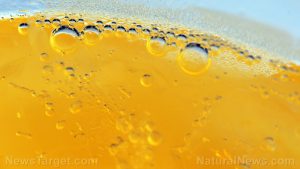
Demeton-S-methyl — toxicity, side effects, diseases and environmental impacts
Tuesday, December 05, 2017 by Rita Winters
http://www.naturalpedia.com/demeton-s-methyl-toxicity-side-effects-diseases-and-environmental-impacts.html

Demeton-S-methyl is a systemic and contact insecticide and acaricide that is a member of the organophosphate family of chemicals. It is highly soluble in water, volatile, and highly toxic to mammals. Demeton-S-methyl is a cholinesterase inhibitor, a neurotoxin, and a recognized irritant that causes many negative side effects when exposed to humans. It is also highly toxic to beneficial insects and animals like birds, earthworms, and honey bees. Demeton-S-methyl is a colorless to pale yellow oily liquid with a characteristic odor and it is not registered for use in the E.U. nor in the U.S.
This insecticide is used to control aphids, sawflies, spider mites, and lacebugs. Other names and synonyms of demeton-s-methyl include S-2-Ethylthioethyl O,O-dimethyl phosphorothioate; Phosphorothioic acid, S-(2-(ethylthio)ethyl)O,O-dimethyl ester; CAS-919-86-8; and EC-015-031-00-5.
Trade names for products that include demeton-S-methyl include Meta-Systox I, Meta-isosystox, Azotox, Bay-18436, Bay-25/154, DSM, Duratox, Metasystox 55, Mifatox, and Persyst.

List of known side effects
Demeton-S-methyl is a cholinesterase inhibitor and neurotoxin, meaning it causes side effects in both insects and mammalian nervous systems. Inhalation of demeton-S-methyl may result in negative side effects such as pupillary constriction, muscle cramps, excessive salivation, sweating, nausea, vomiting, abdominal cramps, diarrhea, unconsciousness, dizziness, labored breathing, and weakness. Skin absorption may result in the same symptoms as inhalation. Eye absorption or contact may cause miosis and blurred vision, while ingestion may result in convulsions. It is exceptionally toxic to environmental life forms.
Severe cases of demeton-s-methyl poisoning include side effects such as seizures, incontinence, respiratory depression, and loss of consciousness. Respiratory failure may result in death.
Body systems affected by Demeton-S-methyl
Demeton-S-methyl is not a known carcinogen, but it is a mutagenic and teratogenic compound. It targets the nervous system and may cause excess blood in the tissue of respiratory organs. Liver damage and cholinesterase inhibition in the brain is also likely.
Items that may contain Demeton-S-methyl
Food items that may contain demeton-S-methyl include vegetables including beans, peas, brassicas, peppers, aubergines, onions; fruit including olives, peaches, plums, apricots; tomatoes; cotton; peanuts; wheat; maize; and sorghum.
How to avoid Demeton-S-methyl
Avoid using chemical pesticides, especially products that contain demeton-s-methyl. Occupational situations may result in the inhalation, skin and eye contact, and accidental ingestion of the toxic chemical. Protective gear must be worn at all times when handling the chemical or when in proximity of its applications. Examples of protective gear include chemical gloves, boots, chemical suit, goggles, or a full-face respirator.
First aid measures must be included in training personnel responsible for handling demeton-s-methyl. In case of inhalation, move the victim to an open area with fresh air. Have the victim stay in a resting position until medical personnel arrive. For cases of skin contact, wash the affected area thoroughly with soap and water. During eye contact of dust or aerosol, make sure to flush the affected eye with clean, running water for at least 10 minutes. Accidental ingestion of dust or liquid chemical must be medically treated as soon as possible. For all instances or cases of exposure, contact emergency medical services immediately, or transport the victim to the nearest emergency department as soon as possible.
Where to learn more
- Do you wash your produce? Old fashioned baking soda found to be the most effective at removing pesticide residue
- Poison.news
- Chemicals.news
- Pesticides.news
- Toxins.news
Summary
Demeton-S-methyl is a chemical used in pesticides.
Demeton-S-methyl is non-carcinogenic, but is teratogenic, mutagenic, and may cause reproductive system disorders like infertility.
Demeton-S-methyl is a cholinesterase inhibitor and may result in nervous system breakdown, and consequently respiratory failure and death.
Sources include:
Tagged Under: Tags: Demeton-S-methyl





